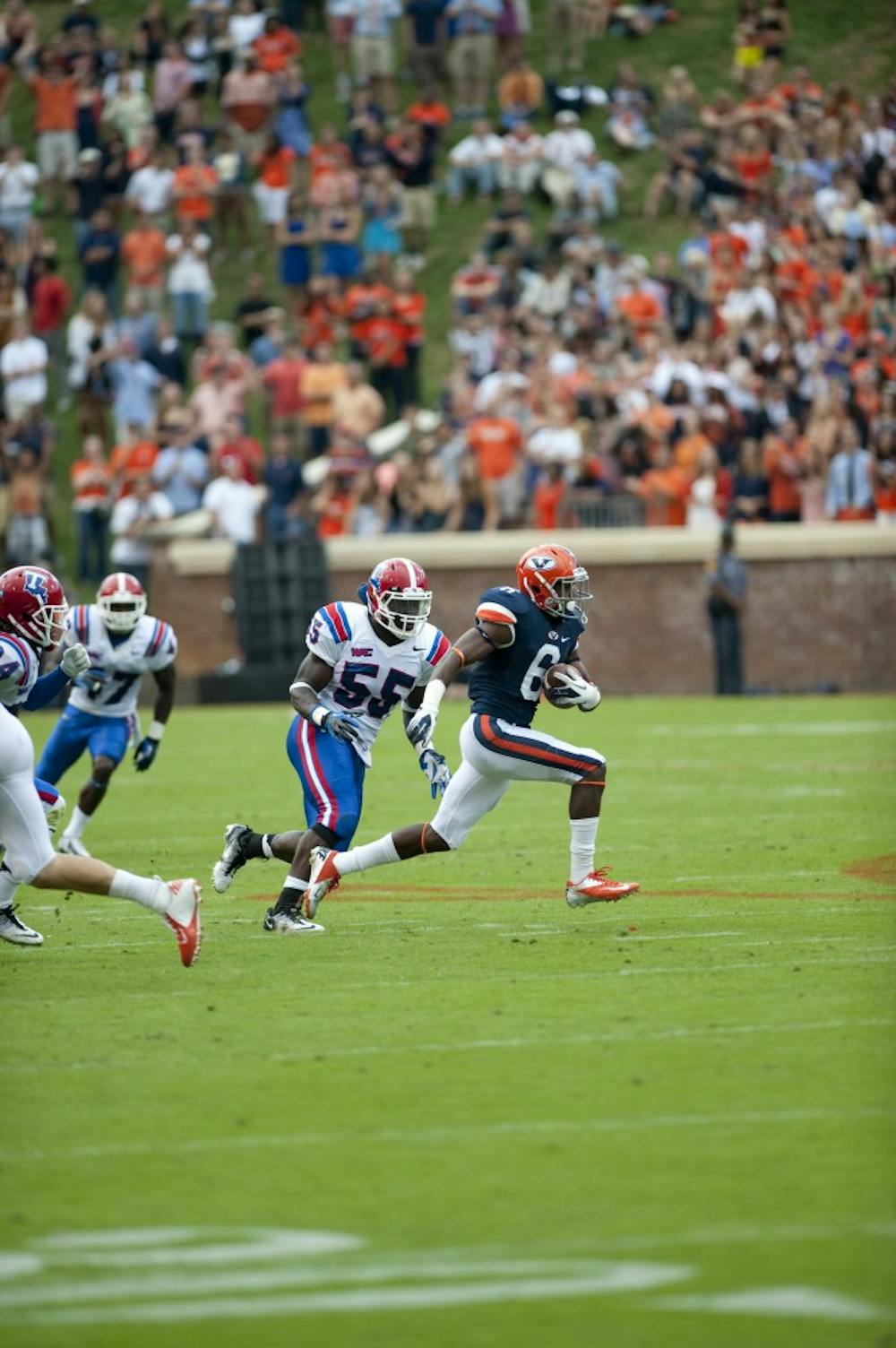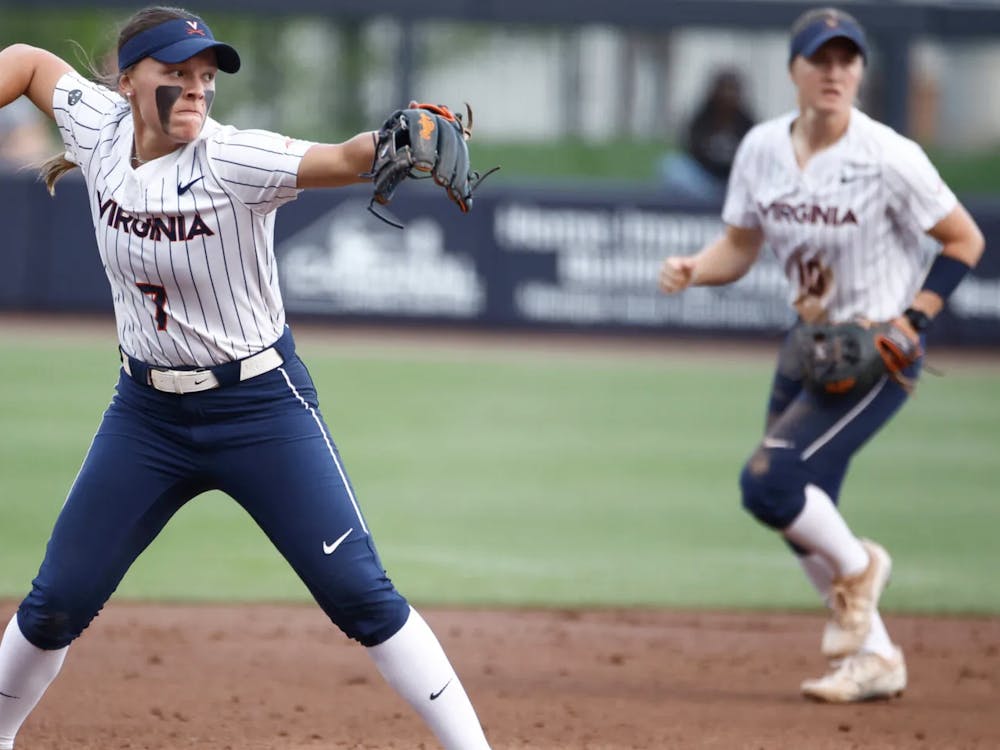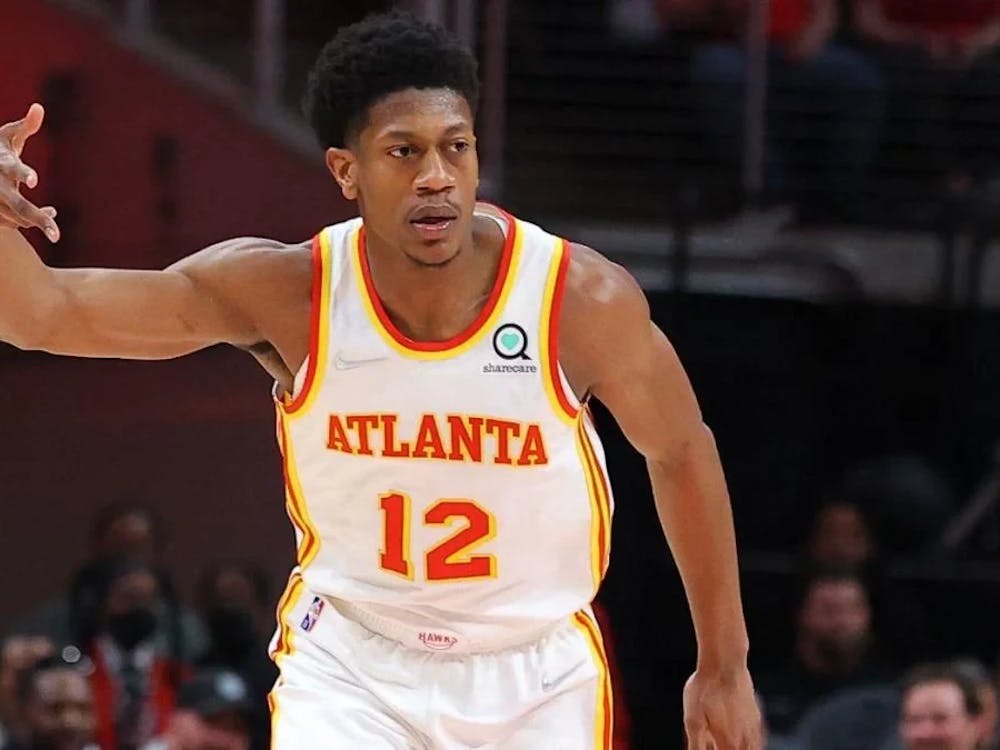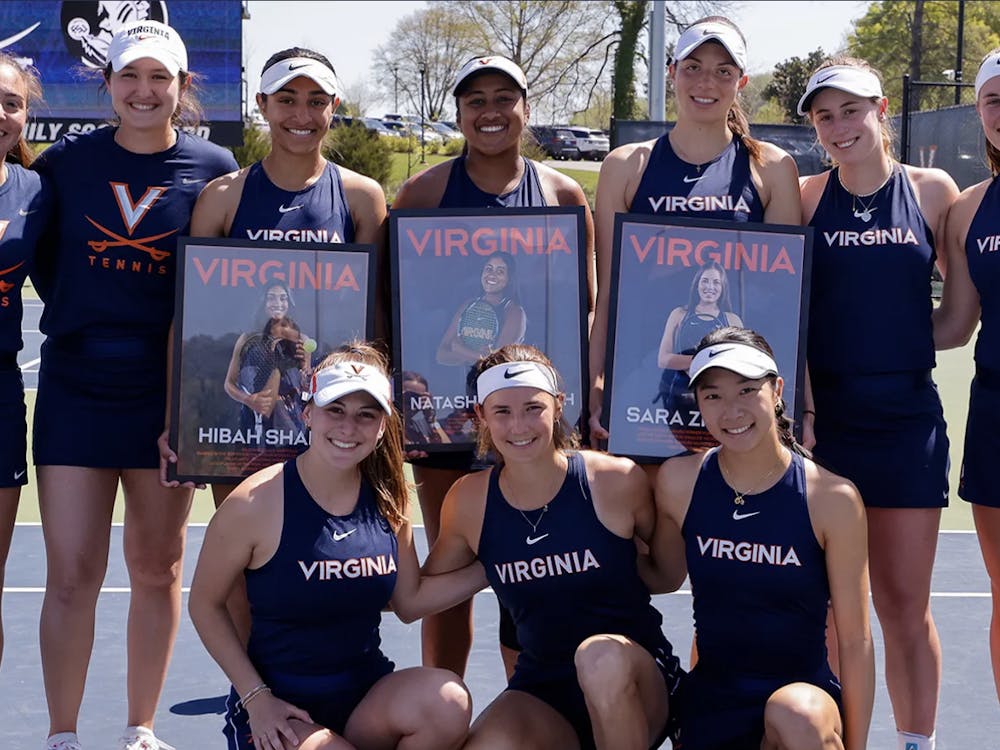For a team pegged at the outset of the 2012 season to steamroll opponents with a dynamic, versatile running game, Virginia has relied immensely on the aerial attack in the season’s first five contests.
Through five games, the Cavaliers have attempted 193 passes while rushing only 165 times, a difference of 28 plays. During Saturday’s 44-38 loss to Louisiana Tech, many of those throws resulted in significant gains — including pickups of 36, 43, 47 and 50 yards on balls thrown to the team’s stable of speedy wide receivers.
“It’s pretty fun as a wide receiver, the ball getting slung all around the place,” freshman wideout Adrian Gamble said. “It’s an opportunity, and I knew my time was going to come along.”
Amid concerns about a disappointing running game that’s averaging just 3.8 net yards per carry and ranks ninth in the ACC in yardage, coach Mike London and offensive coordinator Bill Lazor are employing the more aggressive passing game plan many pundits anticipated as a balance to the team’s strong ground history. The result has been a chance for Virginia’s young but talented cadre of receivers to shine.
“We talked about going vertical and what’s been mentioned about going vertical,” London said. “Having enough skill players to stretch the field, that was definitely one of the mindsets. [But] we’re concerned about the running game.”
Although senior tailback Perry Jones and sophomore counterparts Kevin Parks and Khalek Shepherd have proven themselves capable pass catchers out of the backfield and sophomore tight end Jake McGee has emerged as a reliable target over the middle, quarterbacks junior Michael Rocco and sophomore Philip Sims have aired it out to their downfield burners in recent weeks. The two quarterbacks consistently and mostly successfully attacked Louisiana Tech’s suspect secondary with a variety of deep fades, out routes and skinny posts, suggesting that London and Lazor may stick to the aerial air assault when the ACC schedule commences in earnest this weekend against Duke.
“One way to loosen [the defense] up is definitely to make sure you throw deep, or we’ll throw those intermediate routes and those crossing routes that require receivers to push up the field,” London said.
Any analysis of the Cavaliers’ 2012 receiving corps necessarily begins with sophomore Darius Jennings, whose incendiary play-making ability and improving fundamentals embody the unit’s promise. Jennings leads Virginia with 21 receptions, 319 yards and several bursts of explosiveness that have transformed ordinary completions into momentum-building gains. Primarily a return man last year, Jennings has thrived this season as one of his quarterbacks’ favorite targets and a sure-handed speedster who can take any short throw to the house, as he did on a 51-yard burner in Virginia’s season opener against Richmond.
The burgeoning star credits his improvements to a productive offseason and the impetus created by the departure of last year’s leading receiver, Kris Burd.
“I think once spring ball came around, I felt more comfortable with myself,” Jennings said. “With the guys that graduated, it was my time to step up. So I’ve just been working real hard trying to… go out there and make plays.”
The general preseason consensus, however, held that Jennings would play second fiddle to junior wide receiver Tim Smith. Coming off a 33-catch, 565-yard 2011 campaign, Smith has struggled with an ankle injury this season and has failed to become the go-to guy Virginia fans envisioned. But despite missing most of three games with the ankle ailment, Smith remains the Cavaliers’ most potent vertical weapon when healthy. Last Saturday, he reminded everyone of this fact with a 36-yard touchdown snag on a trick-play pass from Jones.
Sophomores Dominique Terrell and E.J. Scott have chipped in as the de facto third and fourth receivers, with Terrell starting in Smith’s absence. London has repeatedly referenced Terrell as a player who improved dramatically last spring, and Scott has rebounded from an injury-tarnished 2011 to provide yet another option for the Cavalier signal callers.
With so many underclassmen already augmenting the offense, Gamble’s jaw-dropping 23-yard touchdown catch to pull the Cavaliers within 6 against the Bulldogs only reinforced the bright future for Virginia’s receiving corps. The coaching staff now knows Gamble can come through in key moments, and with 4.38 speed he has the breakaway ability they can’t teach.
“It was great to see that Adrian Gamble can be a really good receiver,” London said. “As we talked about, the who and the what in this room, it’s about who are the guys that can go give us some explosive plays and be athletic.”
As if those five weren’t enough, London also recently singled out freshman Canaan Severin as an untapped offensive weapon.
“Severin is another guy that has really good ball skills and ability,” London said. “[We have] to find a way to get him into the game.”
Of course, for all this receiving group’s talent and growth, inconsistency has plagued the whole unit this season. Dropped passes, in particular, have crippled Virginia. Terrell notably let a perfect Rocco pass bounce off his fingertips and into those of a Bulldog defender Saturday for a momentum-shifting interception, and Scott failed to haul in an immaculate bomb from Sims to the end zone late in the fourth quarter. Jennings also dropped a critical deep pass the week before against TCU. London said there isn’t one clear reason for the receivers’ struggles.
“It could be a little bit of everything,” London said. “There [are] different elements to it. But regardless, if it turns into being an interception, it’s a turnover, and those are things you can’t have.”
But the receivers have exhibited enough of their scintillating physical skills and willingness to improve at their craft to merit added attention in London and Lazor’s game-planning. Ultimately, the onus falls on the coaches to maximize the Cavaliers’ considerable firepower.
“I think the receiver group is a positive group for us, a play-making group for us,” London said. “But we have to utilize their abilities and skills.”





